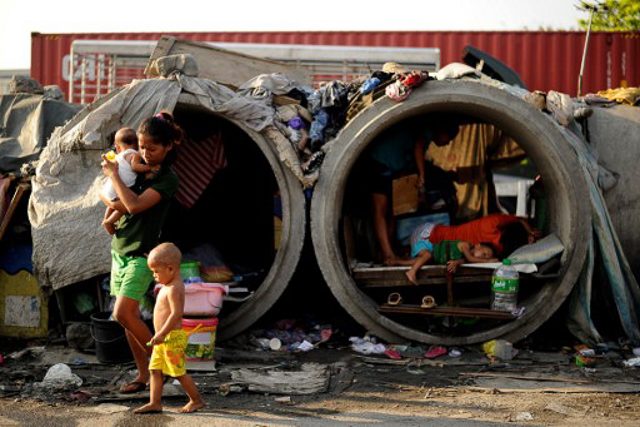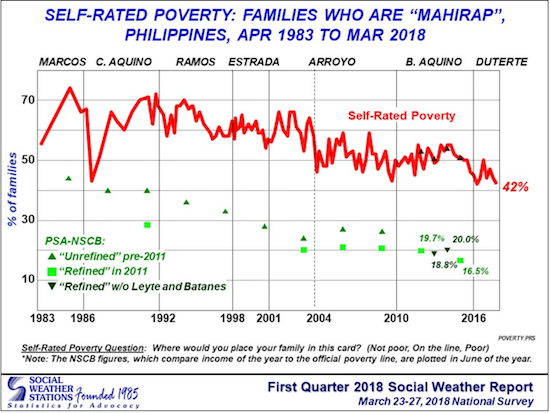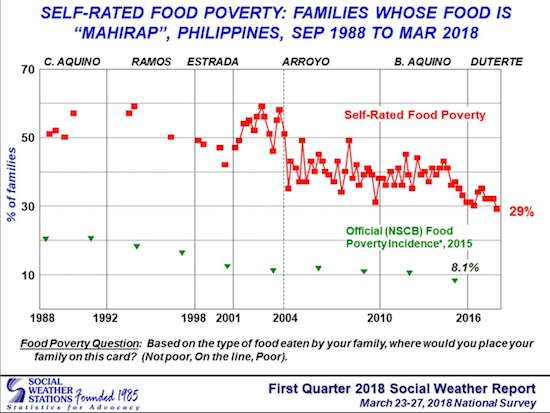SUMMARY
This is AI generated summarization, which may have errors. For context, always refer to the full article.

MANILA, Philippines – After the National Economic and Development Authority (NEDA) corrected reports that the P10,000-budget for a typical Filipino family was only “hypothetical,” the question now is whether or not the agency has a figure for a “decent” life.
In an interview with One News’ “The Chiefs” on Wednesday, June 6, NEDA Undersecretary Rosemarie Edillon admitted that the agency does not have a “convention” over the concept.
Edillon said that NEDA only knows about Filipinos’ aspirations.
The “Ambisyon Natin 2040” survey by NEDA revealed that 79% of the respondents aspired for a simple life, while 16.9% wanted an affluent life, and only 3.9% wanted a rich life.
Respondents also said that a “simple life” consists of a medium-sized home, enough earnings to support everyday needs, at least one car, financial capacity to support children’s college education, and money for local trips.
But a “simple” life may not be so simple after all, as NEDA computed that a family must have a monthly income of P120,000 to afford these things. (READ: No poor Filipino by 2040: Can Duterte gov’t set the stage?)
Edillon said that the aspirations were “not realistic” at this point.
She said that the realistic target is for the country is to “become an upper-middle income country” by 2022, where an individual earns $5,000 a year or around P21,600 in a month on average.
The Philippine Statistics Authority report in 2015 said that a family of 5 actually needed “at least P9,140 on the average every month to meet both basic food and non-food needs.”
Beyond the numbers
Economist and Ateneo School of Government Dean Ronald Mendoza said that looking at the poverty threshold is not enough to gauge the poor’s situation.
“This is just a threshold and if you try to discuss it with people near the threshold, it would not make much sense,” Mendoza said.
For instance, Mendoza pointed out that people living within the threshold “fall in and out of poverty,” due to health concerns, weather conditions, and other factors that may disrupt the limited budget.
He said that beyond the “statistical thresholds,” self-reported poverty and hunger conducted by the Social Weather Stations could also shed light on the situation of the poor.


The 2018 first quarter results of the survey revealed that 42% (9.8 million) of families considered themselves poor, 2 percentage points below from last quarter. The survey also found that 29% (6.7 million) of families said they were eating food for the “poor”, three percentage 3 points below from December 2017.
This is the first time that self-rated food poverty fell below 30%.
Meanwhile, 2.3 million Filipino families or 9.9% of the population said they suffered hunger in the first quarter of 2018.
Mendoza said that people should not obsess with the numbers and instead look for solutions to push people out of poverty.
“We can debate about the threshold all day long and it won’t take us to solutions,” Mendoza said.
Mendoza recommended that the implementation of rice tariffs to lower the cost of rice be prioritized. He also said the effects of the second package of the Tax Reform for Acceleration and Inclusion Law should be looked at. – Rappler.com
Add a comment
How does this make you feel?
There are no comments yet. Add your comment to start the conversation.